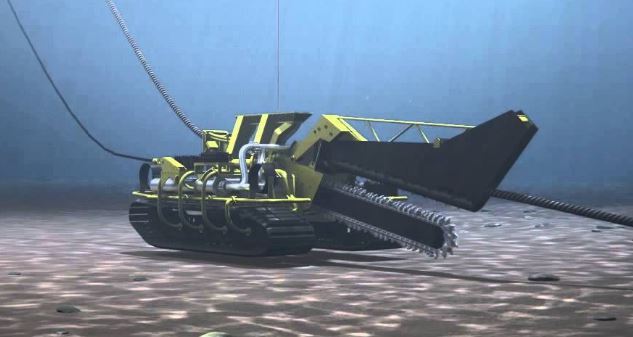Subsea Trenchers
BlueZone Group designs, manufactures and supplies systems for control and monitoring of subsea trenchers developed by Subtrench, www.subtrench.com, Six successful systems deployed and work is continuing of development of new systems.
During the design phase of each system, largely based on the solid platform of previously completed projects, the use of current technology is always the primary focus. This is achieved with BlueZone in-house engineering capability which continually seeks to keep abreast of new developments, as well as a strong commitment from management to pursue and develop internal R&D projects and product development where practical and beneficial to our clients.
Working closely with the Subtrench design team, BlueZone engineers have developed complete electronic systems to meet the custom requirements of each trencher.
The systems have included:
- BlueZone Surface Control Console (SCC);
- CitectSCADA – Graphical monitoring and control software;
- SubSea POD1 – Electronic equipment control and monitoring, and
- SubSea POD2 – Mechanical and hydraulic equipment control and monitoring.
Typically, the system is delivered to allow for monitoring, control and powering of:
- 4 x PAL/NTSC underwater cameras
- 4 x dimmable underwater lights (LED preferred)
- 1 x obsatcle avoidance sonar
- 2 x profiling sonars
- 1 x motion reference unit
Through ongoing evolution and development, BlueZone currently provides a Programmable Logic Controlled (PLC) based control solution, using distributed processing over a 100Mb Ethernet Local Area Network (LAN). This philosophy provides an expansion capability where any number of control nodes can be added to provide any possible functionality required.
With recent innovations in technology remote access for monitoring and system upgrades can also be achieved wherever internet access is available.
The trencher monitoring and control system is optimized through use of the Surface Control Console, SCADA (supervisory control and data acquisition) and two subsea pods.

Recent Trenching Projects
Q7 Wind Farm (Holland)
This project involved the successful trenching of a 210mm OD power cable from above the water line at the beach crossing out to the central monopile located 27 km offshore in 22-meter water depths. The first section from the beach crossing out to the 3.3 km point was trenched to a depth of more than 3.3 meters in a single pass. Average trenching speed achieved was 3.2 meters per minute. The remaining 23.7 km was trenched to a depth of 1.3 meters in a single pass and the average trenching speed was 10.2 meters per minute. When barge movements allowed, a 2 km section of the 1.3-meter section was trenched at an average 17.2 meters per minute. Generally sandy soils with varying degrees of compaction were encountered along the route.
Tatar Strait Pipeline Crossing (Russia)
This project involved the successful trenching of 18.5 km of 30-inch OD pipeline to a maximum trench depth of 2.5 meters in water depths ranging from 0 to 27 meters. Soils changed quite dramatically along the route. Most of the soils were very dense sands with varying degrees of compaction ranging from 5 to 14 MPa. Some small areas of soft silts and others of loose sand were also encountered. 1,905 foreign objects including rocks, cobbles and wood were encountered along the route. A good trenching speed average of 1.7 meters per minute was achieved for this difficult trenching project. Only the use of mechanical cutters enabled the trenching to be successful.
